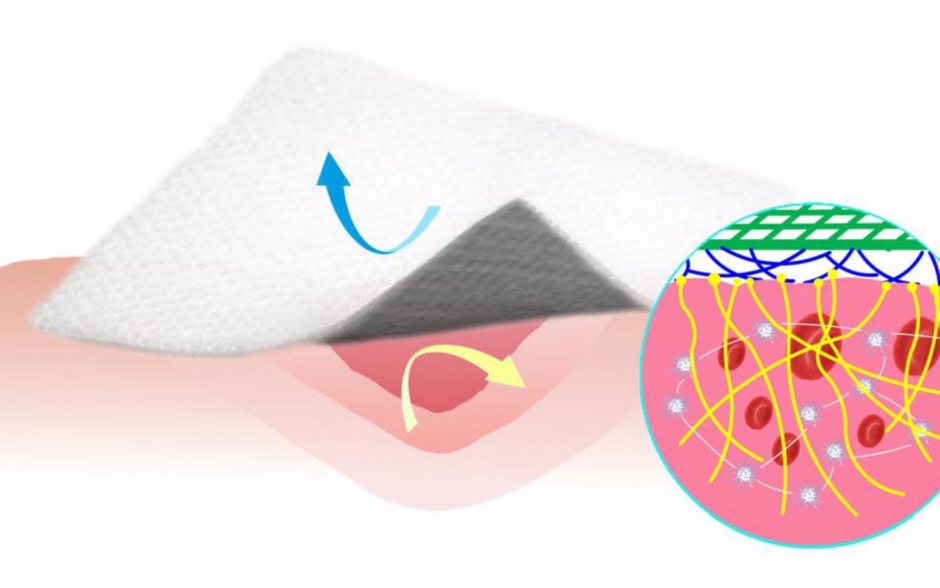
An ETH Zurich team led by Prof Dimos Poulikakos and scientists from the National University of Singapore developed and tested various superhydrophobic materials with the goal of finding coatings for devices that come into contact with blood, such as heart-lung machines or artificial heart devices. Their findings are published in Nature Communications.
Bandage localises adenosine to speed up bone repair
Electroceutical insights could lead to better bandages for chronic wounds
One of the materials repelled blood and aided the clotting process. Although this made the material unsuitable for use as a coating for blood pumps and related devices, the researchers realised it would work as a bandage.
Repelling blood and achieving fast clotting are two different properties that are beneficial in bandages: blood-repellent bandages do not get soaked with blood and do not adhere to the wound, so they can be later removed easily, avoiding secondary bleeding. Substances and materials that promote clotting are used in medicine to stop bleeding as quickly as possible but to date no materials have simultaneously repelled blood whilst promoting clotting.
According to ETH, the researchers took a conventional cotton gauze and coated it with a mixture of silicone and carbon nanofibres.
They were able to show in laboratory tests that blood in contact with the coated gauze clotted in a few minutes. ETH noted that the exact reason why the new material triggers blood clotting is unclear and requires further research, but the team suspects that it is due to the interaction with the carbon nanofibres.
They were also able to show that the coated gauze has an antibacterial effect, as bacteria have trouble adhering to its surface. In addition, animal tests demonstrated the effectiveness of the new bandage.
"With the new superhydrophobic material, we can avoid reopening the wound when changing the bandage," said Athanasios Milionis, a postdoctoral researcher in Poulikakos's group. "Reopening wounds is a major problem, primarily because of the risk of infection, including from dangerous hospital germs - a risk that is especially high when changing bandages."
The potential areas of application range from emergency medicine and surgery for avoiding major blood loss, to plasters for use in the home.
ETH Zurich and the National University of Singapore have applied for a patent for the new material, which the team will refine and optimise before it can be used on humans.





April 1886: the Brunkebergs tunnel
First ever example of a ground source heat pump?